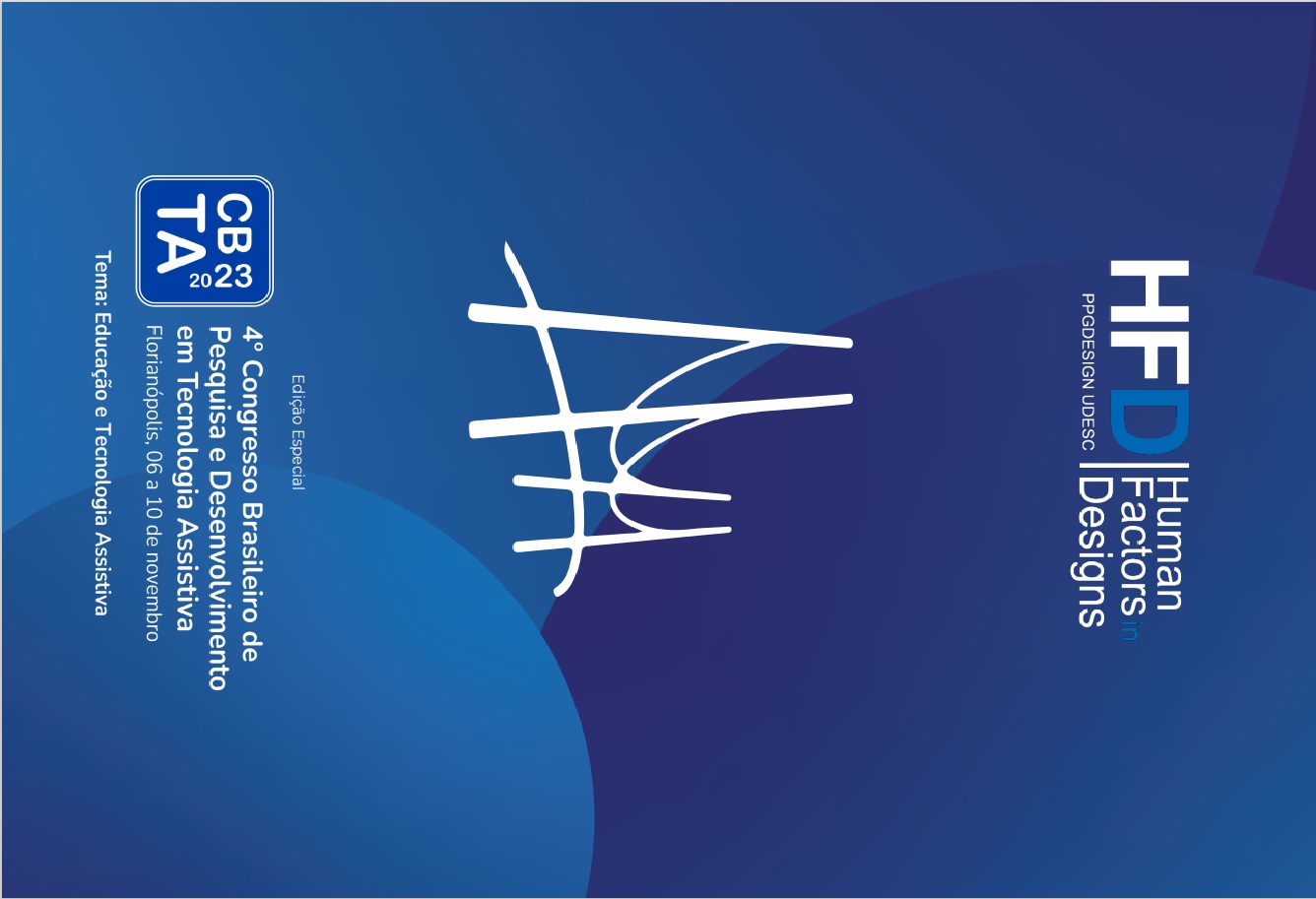Universal Design Approaches in teaching and learning autistic children: the state of the art
DOI:
https://doi.org/10.5965/2316796312242023026Keywords:
universal design, autism, education, inclusion, ASDAbstract
The aim of this article is to understand how Inclusive Design, Universal Design and Universal Design for Learning approaches are used to support the learning of children with Autism Spectrum Disorder in early childhood education. To this end, a systematic literature review was carried out. After the analysis, categories of similarities were generated using inclusive approaches. As a result, it was noted that there are still few studies that use Inclusive/Universal Design approaches in the educational field for this audience. Thus, this gap can be explored in multidisciplinary studies between designers and education professionals.
Downloads
References
ALTENMÜLLER-LEWIS, Ulrike. Designing schools for students on the spectrum. The Design Journal, v. 20, n. sup1, p. S2215-S2229, 2017.
ANDRUNYK, Vasyl et al. Information technologies for teaching children with ASD. In: International Conference on Computer Science, Engineering and Education Applications. Cham: Springer International Publishing, 2019. p. 523-533.
CARRINGTON, Suzanne et al. What Universal Design for Learning principles, guidelines, and checkpoints are evident in educators’ descriptions of their practice when supporting students on the autism spectrum? International Journal of Educational Research, v. 102, p. 101583, 2020. Disponível em: https://doi.org/10.1016/j.ijer.2020.101583.
CAST - Center for Applied Special Technology Universal. Design for Learning Guidelines version 2.0. Wakefield, MA: 2011.
CUNHA, Eugênio. Autismo e inclusão: psicopedagogia e práticas educativas na escola e na família. 2. ed. Rio de Janeiro: Wak Ed., 2010.
DENIZOU, Karine. Universal Design in Primary Schools. In: Proceedings of the Sixth International Conference on Universal Design (UD2022). IOS Press, 2022.
GOMES, D.; QUARESMA, M. Introdução ao design inclusivo. Curitiba: Appris, 2018. 155 p.
GOODALL, Craig. How do we create ASD-friendly schools? A dilemma of placement. Support for Learning, v. 30, n. 4, p. 305-326, nov. 2015. Disponível em: https://doi.org/10.1111/1467-9604.12104.
LIU, Zaixing et al. A Study of Teaching Aids Design for Autistic Children with Focus on Hand-Eye Coordination. In: International Conference on Human-Computer Interaction. Cham: Springer International Publishing, 2021. p. 270-283.
MARTÍNEZ, Zoila Liliana G.; CARVAJAL, Sigrid Andrea Ramos. Teaching English online to students with autism spectrum disorder and Down syndrome during the COVID-19 pandemic. Íkala, Revista de Lenguaje y Cultura, v. 26, n. 3, p. 715-730, 2021.
PAGE, Matthew J. et al. A declaração PRISMA 2020: diretriz atualizada para relatar revisões sistemáticas. Epidemiol. Serv. Saúde, Brasília, v. 31, n. 2, e2022107, jun. 2022. Disponível em <http://scielo.iec.gov.br/scielo.php?script=sci_arttext&pid=S1679-49742022000201700&lng=pt&nrm=iso>. acesso em 20 ago. 2022. Epub 13-Jul-2022. http://dx.doi.org/10.1590/s1679-49742022000200033.
PEREVERZEVA, D. S. et al. Effective Academic Performance Assessment in Children with Autism Spectrum Disorders. Psychological Science and Education. Vol. 25, no. 1, 16–25, 2020.
PRODANOV, Cleber Cristiano; DE FREITAS, Ernani Cesar. Metodologia do trabalho científico: métodos e técnicas da pesquisa e do trabalho acadêmico-2ª Edição. Editora Feevale, 2013.
SERRA, Dayse, (2010). Autismo, família e inclusão. Polêm!ca, v. 9, n. 1, 40-56.
TAKEDA, D. Tudo que você precisa saber sobre autismo. Ludovica. Editora Chefe, 2017.
WALLER, Sam et al. Making the case for inclusive design. Applied Ergonomics, v. 46, p. 297-303, jan. 2015. Disponível em: https://doi.org/10.1016/j.apergo.2013.03.012. Acesso em: 01 jun. 2022.
Downloads
Published
How to Cite
Issue
Section
License
Copyright (c) 2023 Human Factors in Design

This work is licensed under a Creative Commons Attribution 4.0 International License.
Os artigos publicados pela revista são de uso gratuito, destinados a aplicações acadêmicas e não comerciais. Os direitos autorais são todos cedidos à revista. Os artigos cujos autores são identificados representam a expressão do ponto de vista de seus autores e não a posição oficial da revista Human Factors Design. O (s) autor (es) se compromete a sempre que publicar material referente ao artigo publicado na Revista Human Factors Design mencionar a referida publicação da seguinte forma:
Este artigo foi públicado originalmente pela Revista Human Factors Design em seu volume (colocar o volume), número (colocar o número) no ano de (colocar o ano) e pode ser acessado em: https://periodicos.udesc.br/index.php/hfd/index


